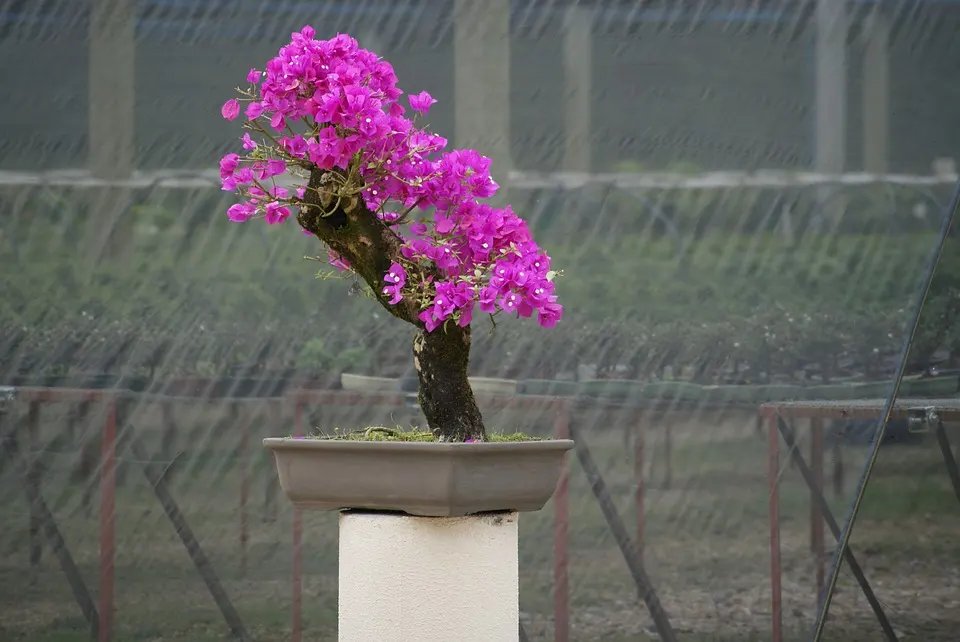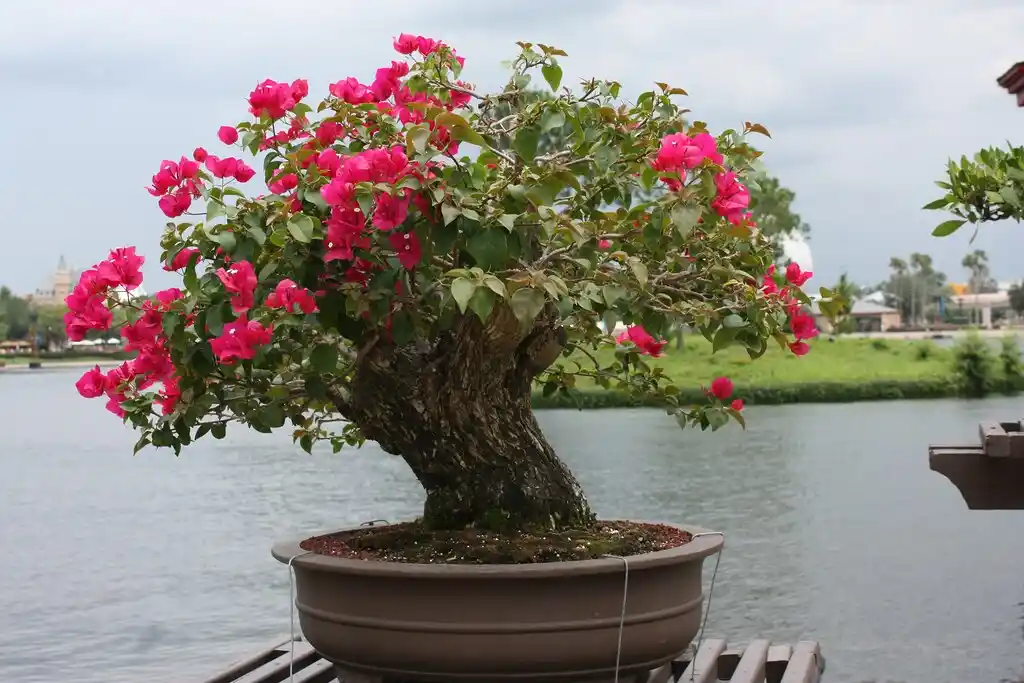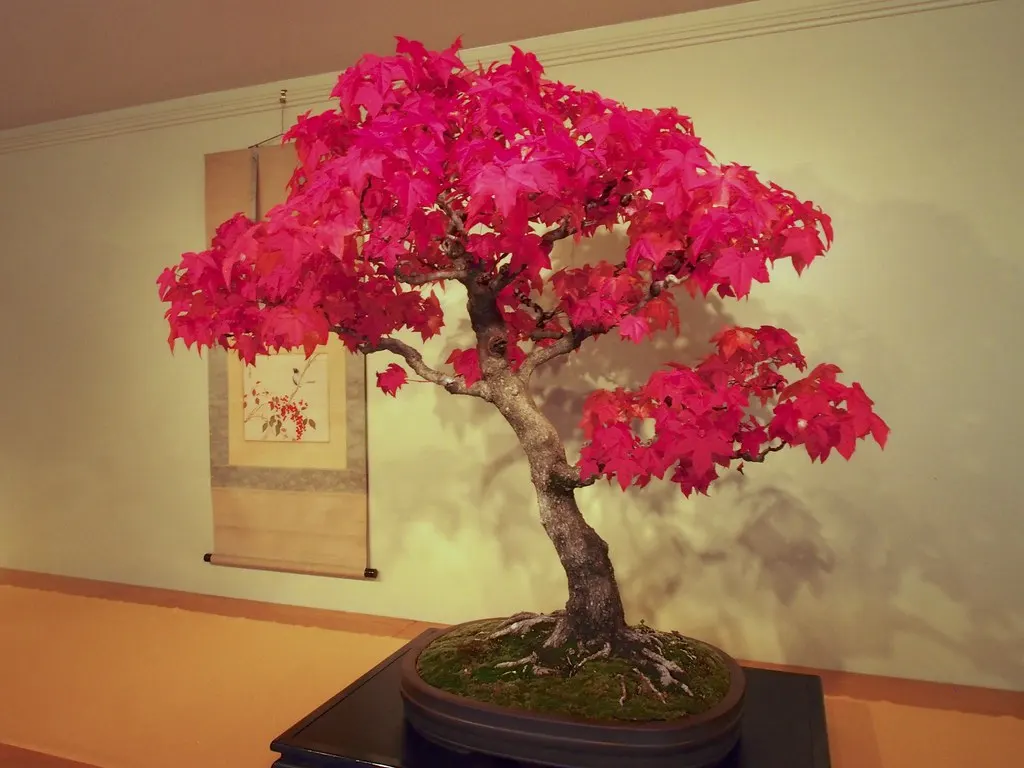Choosing the Right Pot for your Bougainvillea Bonsai
Bonsai is a patient art. Cultivating a bonsai is an interpretation of doing the impossible. Through patience, dedication, and an understanding of natural processes and energies, you can bend something as steadfast as a tree to your will. The art of bonsai cultivates within you a painter, a sculptor, and a soul with a profound understanding of the complex but tranquil nature of the universe. More than an ancient piece of art or functional interior decor, bonsai is a way of life.
Understandable for such a fine art, choosing the right pot is quite a complicated affair. But there are hints, tips, and tricks well-known within the world of bonsai cultivation that we at the Bonsai Alchemist would love to pass to you. We’ll introduce concepts of color, composition, masculinity, and femininity.
However, the most important thing to remember is that growing a bougainvillea bonsai is a deeply personal experience and that no one way is correct. So, while we can give you the general rules of thumb and most widely accepted bonsai potting conventions, the bonsai all of these culminate into will be in your space and thus needs to be pleasing to your eye and inspire tranquillity within your soul.
An Ancient Tale of Balance
Balance – A term so widely used, liberally lathered, and indiscriminately plastered all over self-help books and social media pages. But do we still know what it means to be balanced? The general idea behind the modern neo-balance movement, shall we say, is to be a beacon of calm and tranquillity through the harshest of storms. This is an unattainable ideal and goes against the grain of the principles of balance.
True balance is not ignorance of life’s hardships, which would be necessary to be completely unaffected by anything going on around us. It is the acknowledgement that the universe comprises forces, equal but opposite, that must both be appreciated and understood. As mirror images of the universe in so many ways, we contain the same forces within us.
Yin and Yang, the story of the two wolves, whichever path you follow, in terms of true balance, they reach the same destination. Balance is the good and the bad, the high vibrations and the low, the positive forces and the negative. It is a holistic tapestry of mind, body, and soul in equilibrium with each other and their surroundings.
Something as simple as potting a plant doesn’t usually require this depth of thought, but then again, bonsai is not just a plant. Because of the sheer amount of time, energy, and patience it takes to cultivate a bonsai, they are an expression of their maker’s innermost nature. In this way, they not only take on your energy, but they can also teach you to be more mindful of the true nature of balance. It’s a give and take; it’s being receptive to the tree’s needs and expressive of your own.
Bonsai is the harmony between a miniature tree and the vestibule it roots in. Therefore, the pot is just as important as the tree itself. These two elements should resonate with and be in equilibrium with one another.
Potting a Bougainvillea Bonsai
As mentioned above, you should always be mindful of what your particular tree needs. Some trees require deeper pots to support the shapes you train them to grow in. Some need deeper pots due to water consumption. Other trees have root systems that are compatible with shallower or wider pots. The tree’s needs are of paramount importance. Only once you’ve addressed these needs can aesthetics come into play.
Allow the roots of your bonsai tree at least an inch on either side of the pot you choose. Some trees allow you to perform a light root trimming before you pot them in an ornamental setting, but some don’t like their roots to be tampered with too much. Wherever possible, fit the pot to the tree, not the other way around. The easiest way to make sure your bonsai tree fits into the pot you eventually envision it thriving in is to groom it to fit. This is done by training the roots, just as you train the branches, to grow in a way that will integrate with the desired pot.
Another absolute basic requirement in a bonsai pot is proper drainage. You don’t want the water to drain too quickly, but you also don’t want to have the roots lying in water for too long.
How Big Should a Bonsai Pot Be?
In terms of depth, the rule of thumb is a pot no deeper than the trunk of your tree is thick. This is both to promote overall health within the tree and is also more pleasing to the eye. The balance between the depth of your pot and your tree also relies on the foliage. A tree with heavy fruit or thick, vibrant foliage may look more balanced in a deeper pot. In the same way, a try with more sparse foliage would look perfectly in place in a shallower pot, as long as it also has a fairly narrow trunk.
The width of the pot is also heavily influenced by balance. The concept of balance is two-fold; Both physically ensuring that the pot can balance the weight and size of the tree and that the entire image is pleasing and balanced to the eye. If you choose an oblong pot, this would be either an oval or rectangle; it should be ⅔ as wide as the tree is tall. This gives the roots ample space to grow outward and visually anchors the tree. For circular or square pots, the pot should be ⅓ as wide as the tree is tall. If your tree is shorter than it is wide, use the foliage canopy as a measurement instead of the trunk.
These are fairly standard principles but go with your gut if you feel your tree looks better or has more space in a deeper pot.
Masculinity and Femininity
Due to the way they reproduce, most plants have assigned genders. Trees are no exception. Female trees usually bear fruit and flowers, but because of cross-pollination and grafting of certain species of trees, most trees are a combination of both masculine and feminine features.
But the concept of masculinity and femininity in terms of bonsais has more to do with the tree’s overall look. Masculine trees are typically those grown in the formal upright style. They also typically have thicker trunks, rougher bark, and simpler foliage. These trees have strong, anchored energy, and the pots they are placed in should reflect these qualities.
Masculine pots feature straight lines, harsh edges, and little to no decoration. Plain does not mean less appealing, however. These pots are usually raw unglazed terracotta in natural earth tones that complement feature colors in the tree’s bark or foliage.
Trees with feminine energy are much more vibrant displays of grace and elegance. Perfectly suited to any of the informal styles, the more poetic of us bonsai enthusiasts identify feminine trees by the sensual movements their trunks and branches seem to simulate. They appear to dance barefoot in the soft soil, unencumbered by the weight of their succulent fruits or enchanting flowers.
Feminine trees require feminine pots. Look for softer edges, rounder shapes, and more decorative finishes. A beautiful glaze in a soft color complementing the fruit or foliage of the tree is the perfect accompaniment.
Some bonsais have both masculine and feminine features. These can be masculine trees grown in feminine forms or softer, lighter trees grown with strength, resilience, and grounding energy. Trees that vacillate between the two expressions of gender are a free-form space when it comes to potting. Here you can choose to accentuate one of the energies over the other or choose a pot that is a harmonious culmination of soft, harsh, straight, curved, light, and dark. An otherwise feminine pot with rounded shapes and intricate carvings, completely naked and unglazed in a deep earthy tone, comes to mind. Or the opposite; a severe, masculine shape, completely devoid of adornment, save for a soft-colored high-gloss finish.
Color Theory
The color theory of bonsai potting, lightly flirted with above, is usually determined by the overall gender of the tree. Lighter, more vibrant colors suit feminine bonsais, and darker earthier tones are better suited to the masculine sort. But the age of the tree also plays a role. Lighter colors accentuate the youth and vitality of younger bonsais. The wisdom of the years contained within the trunks and branches of more mature trees is better showcased by darker colors.
When choosing a color for your bonsai pot, also take note of colors already present within the tree. If your tree’s bark features strong rust tones or flashes of autumnal colors, a classic terracotta pot would do wonders for the overall image. You could also go for dark shades of jade to match certain trees’ foliage or choose a color that complements elements of the tree instead of mimicking them.
Generally, complementary colors are located directly across from each other on a color wheel. This means for purple foliage, you could go for a vibrant yellow pot. The beautiful bracts of the bougainvillea bonsais are prime examples of ways to play with color. The classic magenta hues are equally as well suited with a magenta or deep maroon pot as they would be with magenta’s complimentary vibrant greens.
By the same theory, if you use the green foliage of a more masculine tree as a factor, you could offset its masculine energy with a magenta or deep maroon pot.
Color is the final piece of the bonsai puzzle. While within the community of bonsai enthusiasts, we have seemingly stringent rules and conventions, ultimately, these are all subject to personal choice. Choose a color that speaks to you. Whether you base this choice on the tree, your emotional or spiritual well-being, or the dominant color in the tree’s ultimate surroundings in your space is completely up to you.
Final Word
Now that you’ve picked up a thing or two about choosing the right pot for your bougainvillea bonsai, why not dive into some of our other articles? Our greatest hope is that the passion for the fine art of bonsai cultivation is spread far and wide and grows like the old rowans and yews of the British Isles. Remember, while there are rules of thumb and conventions for potting, your bonsai is your journey and domain.
Find wisdom in the words of the ancient Wiccan rede ‘An ye harm none, do what ye will’ and apply it to your bonsais by looking after their needs while you cater to your own. Mirror your bonsai by learning and growing and let that receptive yet expressive energy branch out and root in other aspects of your life.









